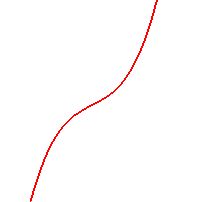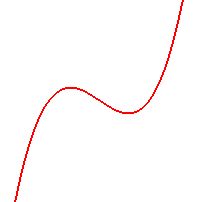Question 976266: please a need help with this
QUESTION
(a)prove that the equation mx(x^2+2x+3) = x^2-2x-3 has exactly one real root if m=1 and exactly 3 real roots if m=-2/3.
(b) prove that tan t = sin2t/1+cos2t
and hence obtain the value of tan 15 degrees and 45 degrees and express the result in standard from
THANKS
Answer by KMST(5328)   (Show Source): (Show Source):
You can put this solution on YOUR website! THE EASY ONE:
(b) prove that tan t = sin 2t/(1+cos 2t) or  . .
(Parentheses matter because sin 2t/(1+cos 2t)= , ,
but  ). ).
sin 2t/1+cos 2t = and and  are popular trigonometric identities. are popular trigonometric identities.
 and and  <---> <---> even better known. even better known.
If we substitute, we get
 = = = = = = = = = = = =
THE OTHER PROBLEM:
(a)prove that the equation mx(x^2+2x+3) = x^2-2x-3 has exactly one real root if m=1 and exactly 3 real roots if m=-2/3.
 <---> <---> <---> <---> is a cubic equation, is a cubic equation,
and cubic equations are easy to solve only when the teacher designs them so that they will be easy to solve.
The roots we look for are the zeros of the cubic polynomial  . .
In general, to know how many roots the cubic polynomial has, and to find their approximate values we can use calculus (or a graphing calculator).
When  , ,  . .
In the case of this cubic polynomial, we can actually find all three zeros easily,
because with  , ,
 , so , so  is one of the zeros, is one of the zeros,
so  is a factor of is a factor of  and dividing we find that and dividing we find that
 . .
So, the other two real zeros (if any) would be the solutions to
 <---> <---> <---> <---> <---> <---> , ,
which are  and and  . .
When  , ,  , ,
and I do not see an easy algebra way to figure out if that polynomial has 3 real zeros.
There may be a simpler algebra way to prove it has only one,
but I keep thinking calculus.
That bothers me, because I suspect there is a simpler (and therefore better) solution.
A cubic function,  , may have a graph like this , may have a graph like this  , or this , or this  , or this , or this  , ,
with no relative maximum or minimum,
and then it would cross the x-axis (making  ) just for only one value of ) just for only one value of  . .
Then, the equation  would have exactly one real root. would have exactly one real root.
Cubic polynomials can also have graphs like this  , or this , or this  , with one maximum and one minimum, , with one maximum and one minimum,
and in that case the graph may cross/touch the x-axis at one, two, or three points,
as in  , or , or  , or , or  . .
In those cases, the equation  would have respectively one real root, or two, or three. would have respectively one real root, or two, or three.
We would want to know if the maximum and minimum values of 
are both positive, or both negative (one root), or
one is zero (two roots), or
one is positive and the other negative (3 roots).
We can figure out if  has a maximum and a minimum by looking at its derivative, has a maximum and a minimum by looking at its derivative,  or or  . .
The derivative will be a quadratic function, and its real zeros (if any) indicate maximum and minimum.
With  , ,  . .
When  , ,  has the derivative has the derivative
 , which has no real zeros. , which has no real zeros.
 for all values of for all values of  , ,
so  is a continuously increasing function that must have exactly one real zero. is a continuously increasing function that must have exactly one real zero.
That zero must be between  and and  , because , because
 and and  . .
NOTE:
When  , ,  . .
If we had not found the three roots of  so easily, so easily,
we would look at the derivative for information,.
 , which has the real zeros , which has the real zeros  and and  . .
For  and for and for  , ,  and and  decreases. decreases.
For  , ,  and and  increases. increases.
 looks like this looks like this  . .
There is a maximum at  , with , with  , ,
and a minimum at  . .
If  , there are 3 zeros. , there are 3 zeros.
 , ,
so there are 3 zeros:
one at some point with  , ,
another one for some point with  , ,
and one for  . .
|
|
|